The drive from Christchurch to Kaikōura starts quietly, but as the road winds North, the rolling hills of Waipara and the Greta valley march closer and loom higher. “There is big country here,” the mountains whisper, “But we are the gatekeepers.”
The South Island of New Zealand has a population of just over one million, but 800,000 of those people live in the main cities and towns—including Kaikōura. As soon as you leave the urban centres, you enter farmland that few call home, bordered by vast tracts of wilderness. This wilderness is unpopulated, but it isn’t empty; the relatively small population of humans makes Aotearoa, New Zealand a fantastic destination for wildlife spotting and there is arguably nowhere better in the world to see whales.
Kaikōura is particularly remote, isolated by mountains to the North and the South which makes for a dramatic approach. As you drive over Pinnacle Rock, the town suddenly appears below you, perched on a small peninsula and framed by the massive Seaward Kaikōura Range to the North and West, the South Pacific ocean to the East. Beneath that glittering surface, the mountains hide their feet in the abyss of the Kaikōura canyon, a u-shaped geologically-active submarine trench that descends into deep water and merges with an ocean channel system that can be traced for hundreds of miles across the ocean floor.
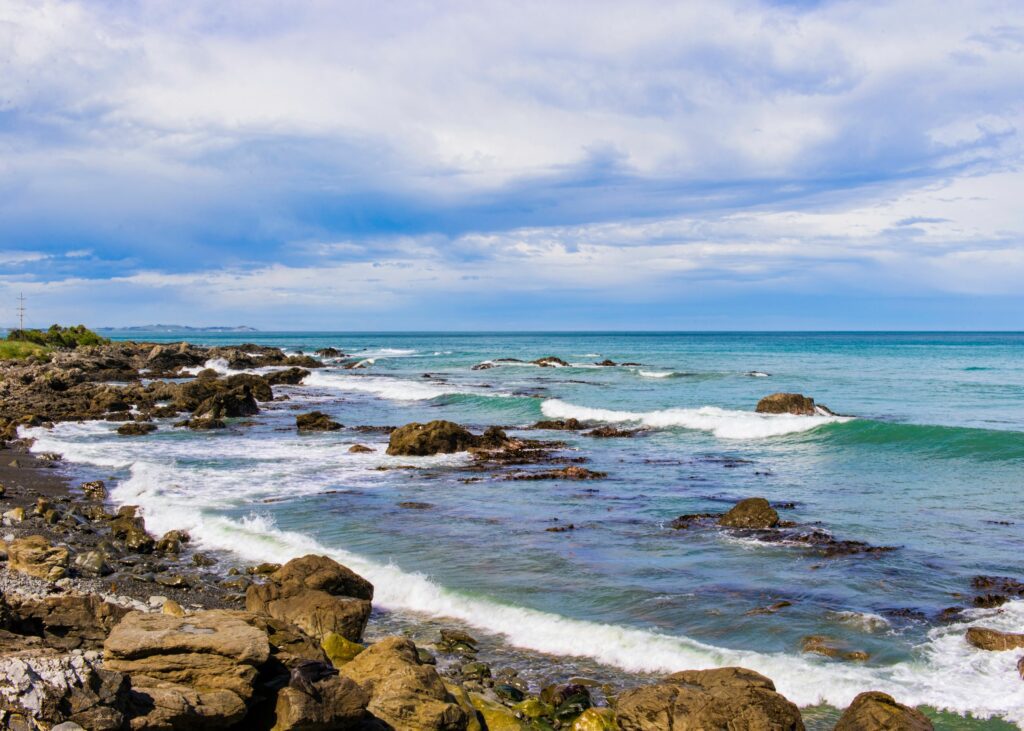
The upswell of currents from the trench brings an astonishing diversity and volume of wildlife. Cold water moves along the base of the trench towards the coast and begins to rise, bringing with it nutrients from the deep ocean which feed a diverse ecosystem that begins with plankton, supports deep-sea fish and ends with the whales and dolphins that draw so many human visitors to this craggy shoreline. New Zealand fur seals bask on the rocks, well fed by the kelpy reefs and divers only need a snorkel to help themselves to what Kiwis call crayfish, but the rest of the world knows as lobster. The name “Kaikōura” itself means “eat crayfish,” and comes from the story that Tama ki te Rangi, an early Māori explorer, paused here to eat crayfish on his way from the North Island.
Kaikōura has always been a popular stop off first for Māori and later Pākehā (Europeans) thanks to the abundant food and shelter the peninsula offers. It was whaling specifically that first brought Pākehā to this remote town. The depths of the Kaikōura canyon, unusually close to shore, attract sperm whales who are present year-round. Sperm whales have a waxy liquid in their heads which was prized in the 18th and 19th centuries as a fuel source for lighting as it burns bright and with no smell. It also acts as a lubricant, thanks to its low viscosity and stability. In 1842 the first European family to arrive in town, the Fyffes, established a whaling station and by 1859, the demand for land by European settlers resulted in the government purchase of the Kaikōura district.
Today, whaling is a distant memory and Kaikōura is the base for the Hikurangi Marine Reserve, established off the coast in 2014.
What to see
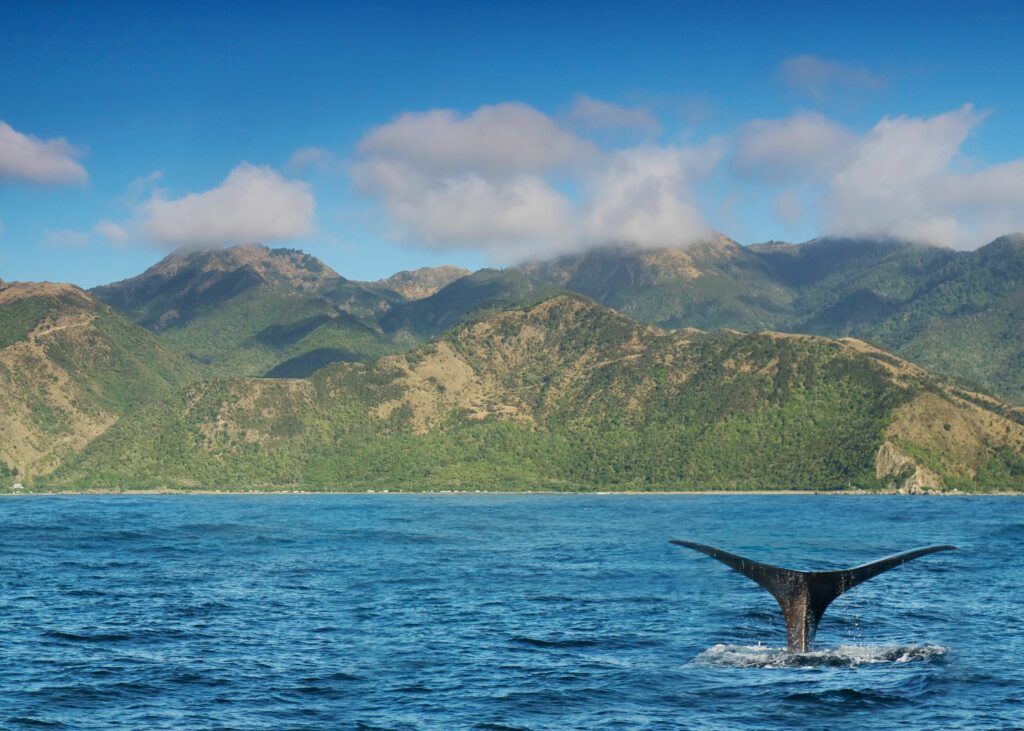
Whales (Tohorā)
Kaikōura is an internationally-recognized whale watching destination and the cetateans are the main draw for most visitors. The local tribe (referred to as ‘Iwi’ in Maori), the Ngāti Kuri, have founded and continue to operate Whale Watch mō tātou, ā, mō kā uri ā muri ake nei, meaning ‘’for us and our children after us.’’
Chairman of Whale Watch, Wally Stone, says, “We aren’t about to do anything which will adversely affect the whales that provide year-round income or drive them from the coast. We have the most to lose, so we won’t be doing anything to jeopardize the whales in our waters. We see our business as reinforcing the anti-industrial whaling message.”
As the boat sails off from the jetty, the first part of the trip can be surprisingly smooth, but you hit deep water very fast and conditions can change very quickly. When the skipper sees whales, there can be some quick maneuvering of the boat to make sure it is kept out of the whales’ way but still allowing visitors to get a good view. The sheer size is breathtaking, and sometimes the whales will look right at you. When you meet their eye it’s impossible not to feel awed by the animal looking back at you—there is an understanding in the gaze, somehow.
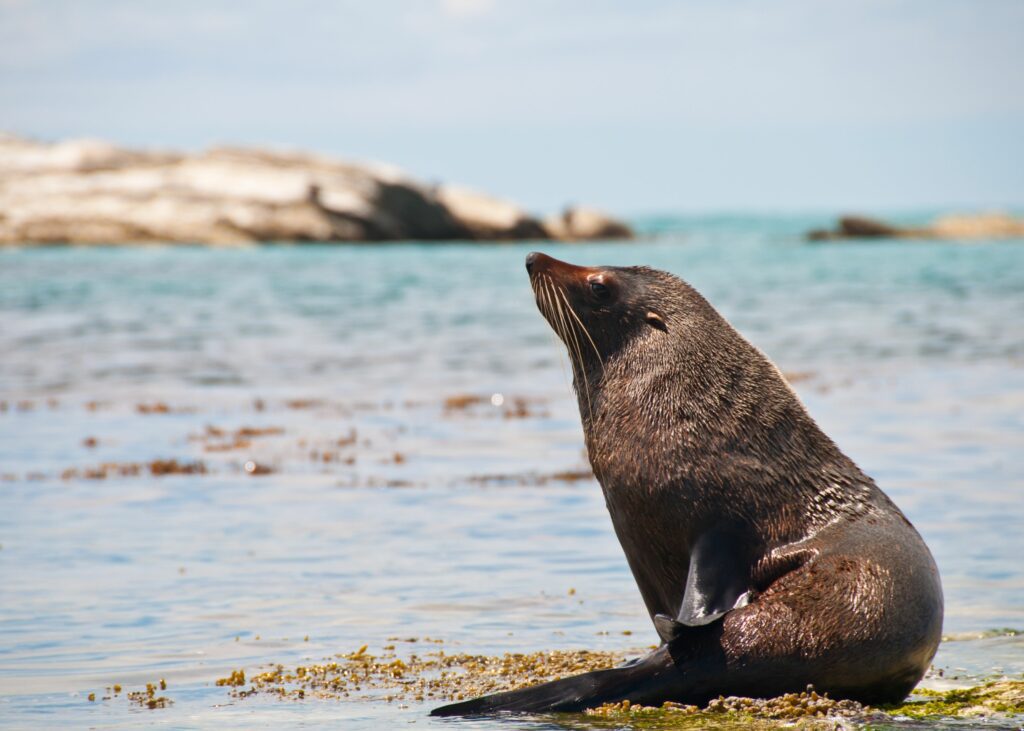
Seals (Oioi)
The best place to see the plentiful New Zealand fur seals that live in and around the town is from the roadside car park by Ohau Point, or take a short walk around the headland from Point Kean car park. Regardless of the weather, the seals give the impression of enjoying their lives immensely—they loll about on the shore, flop slowly over the rocks to go for a swim and are completely unbothered by their human visitors. The advantage of Ohau Point is that the road sits slightly above the rocks the colony live on and you get a great bird’s eye view without disturbing the seals. Between November and January, there are seal pups playing on the shore and you’re unlikely to be the only visitors vying for a great photograph. Just be careful not to get too close if you do walk around the headland—the seals are very used to people, not at all frightened and can be aggressive if they feel threatened.
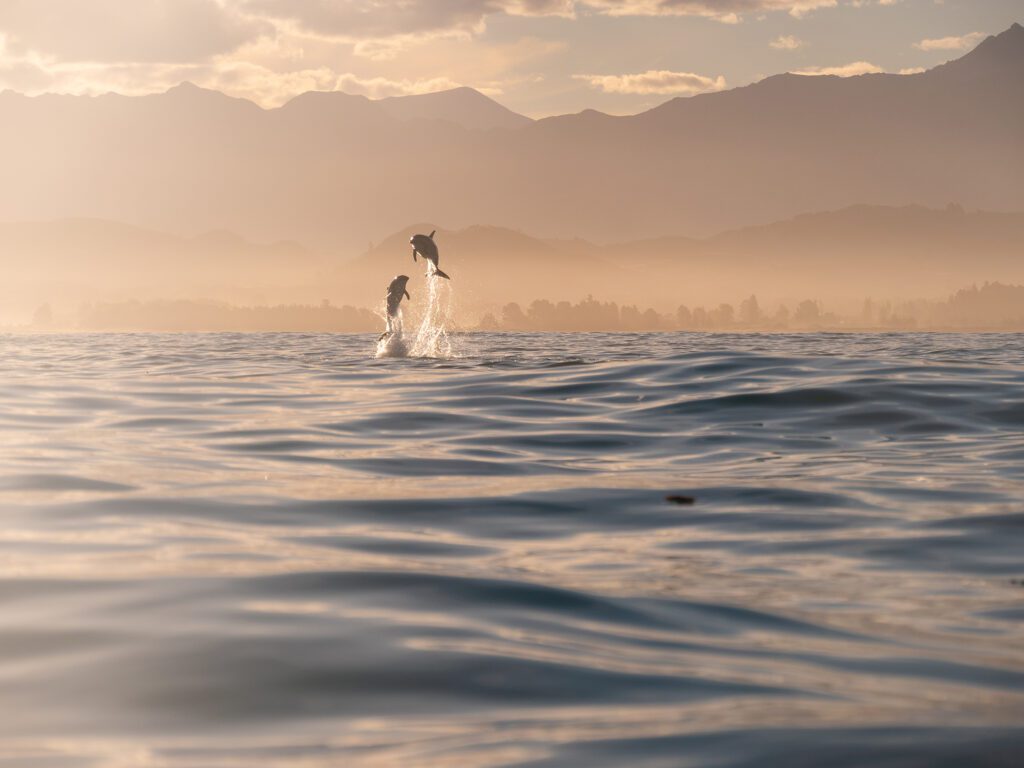
Dolphins (Pāpahu)
There are several species of dolphin in the waters around Kaikōura, including dusky dolphins with their distinctive lack of beak and the endangered Hector’s dolphin (ahoaho), one of the world’s smallest dolphins. The best way to see them is from one of the dolphin watching tours, with the unique opportunity to swim with them in the wild.

Seabirds
There is an incredible diversity of seabirds here, even for New Zealand—the seabird capital of the world. The Hutton’s shearwater (Kaikōura Tītī) only breeds here in the Seaward Kaikōura Range and is the only seabird in the world that breeds in an alpine environment. The Red-billed gull (tarāpunga) also has one of its three breeding colonies here, as does the little penguin (kororā).
When to go
Kaikōura is wonderful in any weather and at any time of the year. If you plan to take a whale watching tour, it is worth touching base with our team about weather conditions before you confirm the final date. Bear in mind that a mid-week booking is also more likely to give you a bit of flexibility if the weather gets rough.
What to bring
Warm, waterproof clothes (fleece, gore-tex, etc.). New Zealand is famous for having four seasons in one day and even in the middle of summer, it is best to be prepared. Don’t forget your camera, but don’t miss the opportunity to allow yourself to be suspended in time—Kaikōura is a special place.
How to get there
Kaikōura is an easy two-and-a-half-hour drive from Christchurch and a convenient stop on a South Island tour. You can visit the wineries in Waiau and the alpine resort town of Hanmer Springs on your way North from Christchurch; this extends the drive a little but not by much more than an hour. You can carry on up the coast from Kaikōura to Blenheim. It’s always worth checking road conditions and travel times on the New Zealand Travel Authority (Waka Kotahi) website before you set off. Don’t underestimate how wild and woolly the roads here can be!
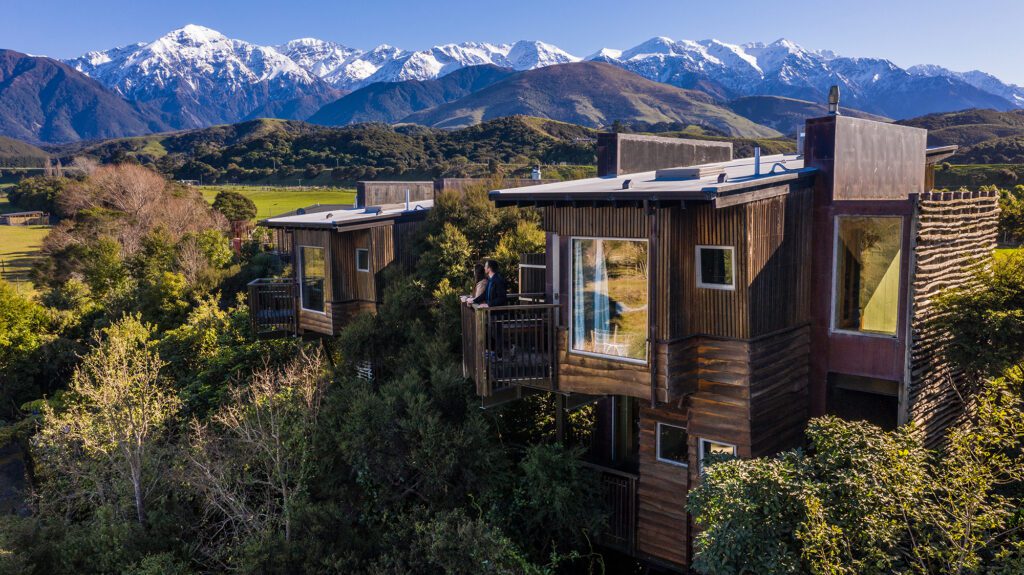
Where to Stay
Hāpuku Lodge and Treehouses, is a contemporary country hotel located on a deer breeding farm in the South Island of New Zealand, 12 kilometres north of the renowned eco-marine town of Kaikōura. It sits snugly at the base of the Kaikōura Seaward Mountain Range, with the Kaikōura coast and famed Mangamaunu Bay only a kilometer to the east. The Lodge provides luxurious accommodation on Kaikōura’s rugged coastline, a place for guests to relax in its intimate indoor/outdoor setting and a place from which they can explore the larger maritime landscape of Kaikōura.
Our favorite New Zealand Safaris
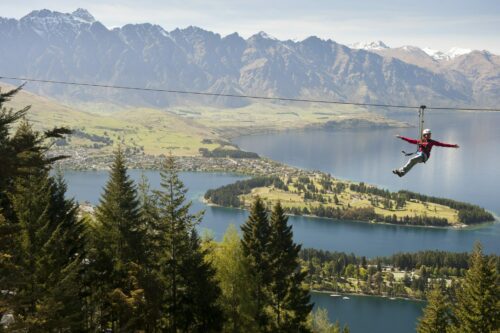
- Itinerary
Multi-generational Memories
Sole-use lodges and exclusive experiences in New Zealand’s top regions
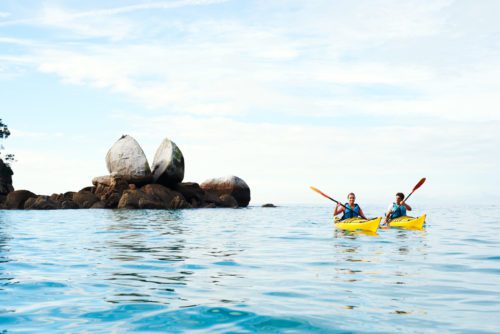
- Itinerary
New Zealand by Road: Highlights of the North and South Islands
Experience New Zealand from North to South - the drive is half the fun!

- Itinerary
10-Night Luxury New Zealand
Relaxing Waiheke, engaging Rotorua, sublime Fiordland, and adventurous Queenstown
